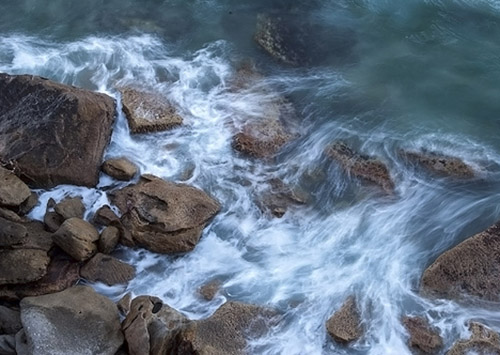Scientists have identified an unexpected source of freshwater – beneath the seabed on continental shelves around the world.
AsianScientist (Dec. 30, 2013) – We often take it for granted, but freshwater is a limited resource, further limited by the pressures that human activities are placing on the Earth’s reserves.
It now seems that freshwater can be found in an unexpected place – beneath the seabed on continental shelves around the world. A new study published in the journal Nature reports that an estimated half a million cubic kilometers of low-salinity water is buried below the seabed in various locations, including off the coasts of Australia, China and South Africa.
Groundwater scientists have known of freshwater under the seafloor, but it was thought to occur only under rare and particular conditions. In this latest study, however, lead author Dr. Vincent Post of the National Center for Groundwater Research and Training (NCGRT) and the School of the Environment at Flinders University reports that fresh and brackish aquifers below the seabed are actually a fairly common phenomenon.
Dr. Jacobus Groen of VU University Amsterdam in the Netherlands, a co-author on the study, spoke to Asian Scientist Magazine about the possibility of finding offshore groundwater in Southeast Asia.
“I visited Singapore in 2003 to explore the possibilities of finding offshore meteoric groundwater (OMG). OMG is most likely present everywhere on the Sunda Shelf – the seas between Thailand, Malaysia and Indonesia. As for Singapore, indications for OMG have been found on the Sumatra side of the Strait of Malacca,” Groen says.
“I also did a small groundwater survey in the Old Alluvium on the east side of Singapore. In that zone there is a well close to the coast with deep fresh groundwater, which – to my opinion – can only be explained as fossil water formed in glacial times when sea level was low and the entire Strait was exposed. This fossil groundwater is likely to extend into the offshore sediments.”
The volume of offshore water is finite, but the quantities are vast, the authors say. Even for megacities like Singapore the stored amount of OMG will last for hundreds or even thousands of years. But there are also some environmental effects that have to be taken into account, such as the lowering of the seafloor or land around the wells, which necessitate that recovery should take place some distance away from the coast.
“The volume of this water resource is a hundred times greater than the amount we’ve extracted from the Earth’s sub-surface in the past century since 1900,” says Post. “Knowing about these reserves is great news because this volume of water could sustain some regions for decades.”
Given the location of these resources, Post says that there are two ways to access this water: either build a platform out at sea and drill into the seabed, or drill from the mainland or islands close to the aquifers. While offshore drilling can be very costly, Post says this source of freshwater should be assessed and considered in terms of cost, sustainability and environmental impact against other water sources such as desalination, or even building large new dams on land.
If the extracted groundwater is not fresh but moderately brackish, desalination may be required, the authors say. This process results in a brine residue that has to be disposed of. However, brine production and energy requirements for OMG are much smaller than those for seawater desalination, which makes this resource environmentally more attractive, they say. More
